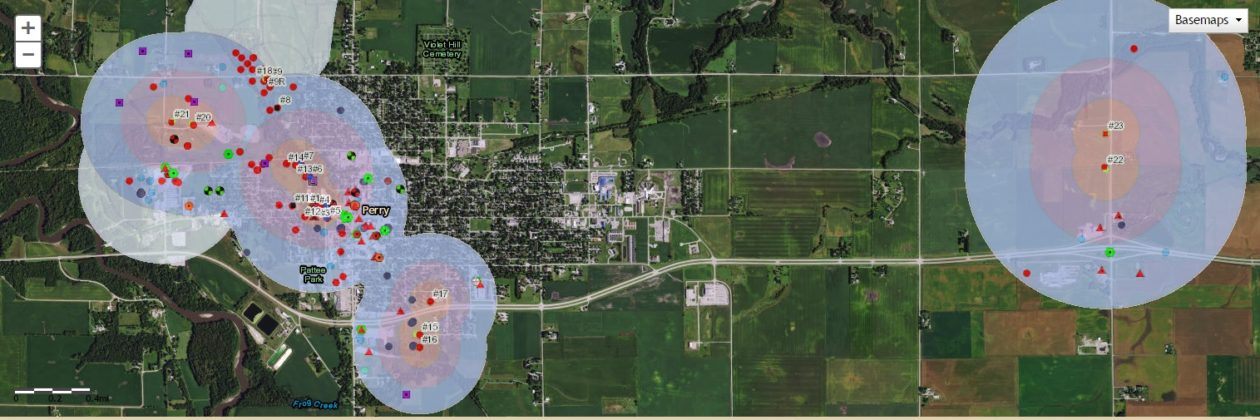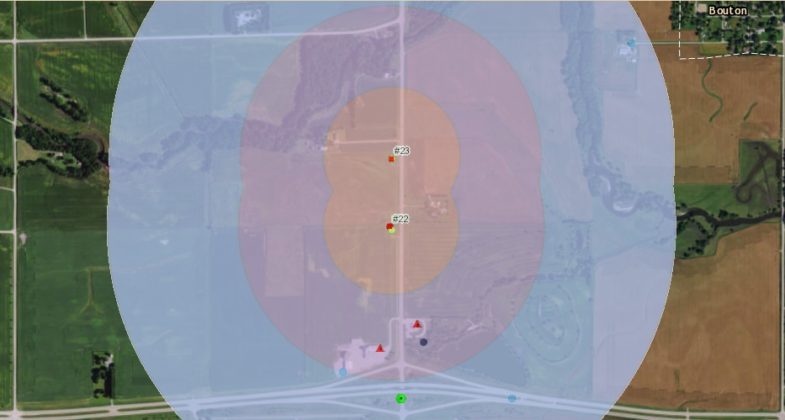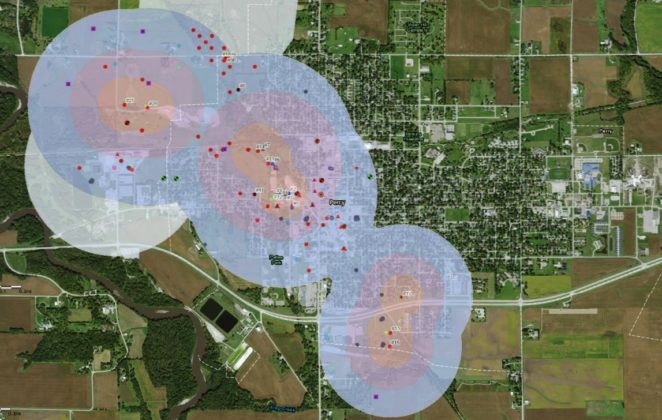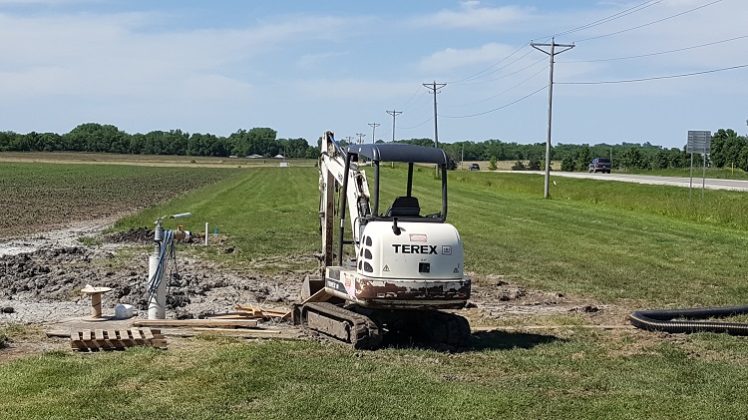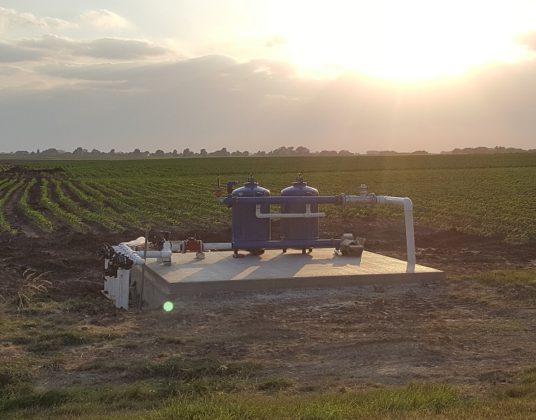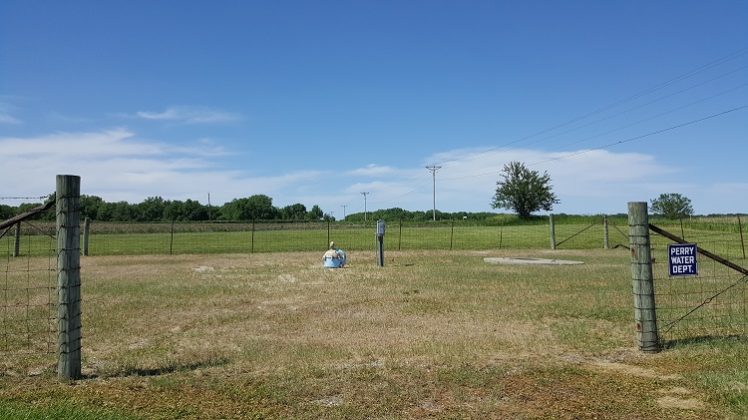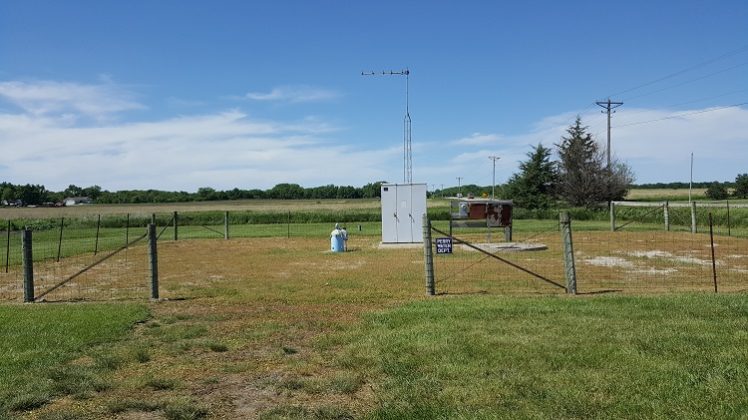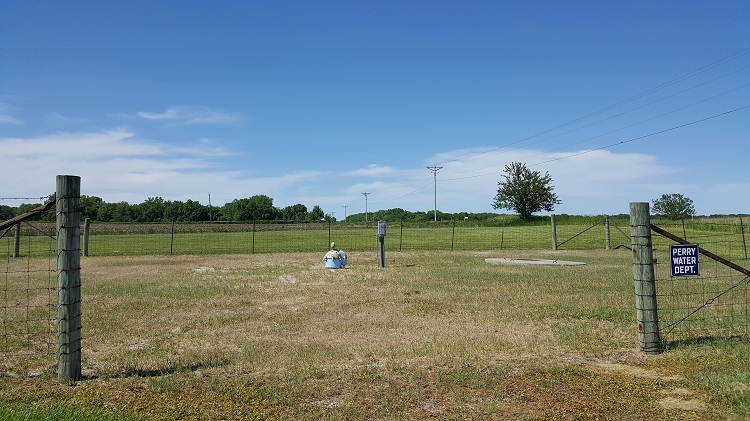
The Perry Water Department lost the gates for its two wells along U.S. Highway 169 on or around the Memorial Day weekend when thieves stole them, but the wells got some new neighbors lately when a nearby ag retailer sunk an irrigation well just down the road from the Perry well field.
Perry Water Department Superintendent Hank Schmidt described the theft of two 15-foot, heavy-duty gates, each worth about $200.
“I’d been out there Thursday the 25th,” Schmidt said, “and the gates were in place. I met a well guy out there who was doing some testing on our well for an adjacent well, and the gates were in place at the point. On Tuesday the 30th, they were gone.”
Schmidt said he was surprised at the thoroughness of the gate rustlers.
“They even took the hinges and everything,” he said, “and I would have thought those were rusted on there pretty good.”
For now the wells stand naked and exposed, but a replacement for the gates is contemplated.
“I don’t want to put a new gate out there because they’ll probably take that, too,” Schmidt said, “so I might just put a chain across there. The gates weren’t really giving us much security anyway, keeping honest people out but that’s about all.”
The adjacent well being tested was on land owned by Tri-County Ag, a local agribusiness retailer lying just south of the Perry well field. Schmidt said a “draw-down test on the aquifer” was being conducted. “They measured the depth to the water surface over time as we were running and then shutting off the well. They ran that over three days, I think.”
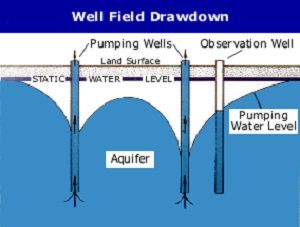 He said the draw-down test “was required by the Iowa DNR to make sure that it wouldn’t influence our wells, and that’s why they ran this test at a higher rate than they actually will be pumping.”
He said the draw-down test “was required by the Iowa DNR to make sure that it wouldn’t influence our wells, and that’s why they ran this test at a higher rate than they actually will be pumping.”
Schmidt said he has not seen the report yet, but the technician doing the test said “it was only drawing ours down about a foot and a half, and we still had plenty of water above the pump.”
He said the technician’s estimate was “very preliminary, but it reassured me that it would not be affecting the city well.”
The new Tri-County well at 13773 N Avenue, at the four corners east of Perry, taps into the same aquifer that the Perry wells draw from in order to supply the city’s residents with drinking water. Repeated calls to Tri-County Ag requesting an interview went unanswered, but Schmidt shared what he knew about the ag retailer’s well-drilling plans.
“I really can’t speak to what Tri-County will be using it for other than what the engineer told me,” Schmidt said. “He said it’s for irrigation on a field out there, and it’s going to be subsurface irrigation with a fertilizer addition — nitrogen fertilizer and phosphorus and potassium. My main concern was that they have a good backflow preventer to make sure none of those chemicals get back down into the aquifer, and they assured me that was the case, and the state engineer from the DNR office, we also had a conversation about that a while back, and he said he was going to require them to put a backflow preventer on their well and then have that tested on a regular basis, annually probably, just to make sure it’s still working.”
Russell Tell, senior environmental specialist with the Iowa DNR, confirmed Schmidt’s account of the Tri-County well. Tell explained the permitting process.
“Before the Tri-County irrigation well was permitted,” he said, “there was consultation between myself at the DNR central office, Tom Atkinson and Janet Gastineau from the DNR Field Office 5, Hank Schmidt from the Perry Water Department, Jeff Huitt of Tri-County, Riley Larson of Larson Well Co. in Roland, Iowa, and Ted Trewin from Dallas County. Because of the proximity of the proposed irrigation well, we required greater than currently required setbacks from the nearest public well and increased the well construction and operational standards.”
Tell said “the landowner adjacent to that public well could have legally put a well right at 200 feet from any of the Perry public wells, but in the permitting we worked to make sure they maintained at least 600 feet of separation, which is three times the legal requirement. In the end, they ended up much farther away from that well, almost double that distance to the nearest Perry public well.”
Tell said the DNR also requires “that they use backflow prevention for any well that’s used on something like that, so there’s a requirement that they manage that with something like a reduced pressure zone or approved backflow prevention device.”
The language of the construction permit issued May 1 by Dallas County Environmental Health Department Director Ted Trewin on behalf of the DNR does indeed require the well to “have an approved reduced pressure zone (RPZ) or other equivalent backflow prevention device installed at the well head before the water distribution line is connected to the irrigation system. The RPZ shall be tested by a certified backflow testing contractor at the start of each irrigation season. The results shall be submitted to Iowa DNR.”
In addition to the well construction permit, Tri-County’s Huitt had to apply for a water use permit from the DNR. The use permit is required of any well owner planning to use more than 25,000 gallons a day on at least one day a year.
Huitt was issued the 10-year water use permit April 26. It set a maximum use limit of 2.8 million gallons annually at 100 gallons per minute.
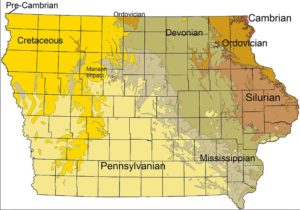 Like the new Tri-County well, the Perry wells descend to a depth of about 140 feet, and they “tap what’s called the Beaver Channel,” Tell said. “It’s a deep-channel aquifer that cuts down through the bedrock underneath the glacial till, the clays and upper sand that lay through there, so it’s a widely know aquifer. It ranges in length quite extensively. It moves many miles up to the northwest of Perry, and it comes down through the north part of Des Moines a little bit to the Des Moines River area. So the aquifer is pretty extensive, and the sequence of sand they tap is fairly thick.”
Like the new Tri-County well, the Perry wells descend to a depth of about 140 feet, and they “tap what’s called the Beaver Channel,” Tell said. “It’s a deep-channel aquifer that cuts down through the bedrock underneath the glacial till, the clays and upper sand that lay through there, so it’s a widely know aquifer. It ranges in length quite extensively. It moves many miles up to the northwest of Perry, and it comes down through the north part of Des Moines a little bit to the Des Moines River area. So the aquifer is pretty extensive, and the sequence of sand they tap is fairly thick.”
By contrast, wells tapping the Jordan Aquifer can range from 1,500 to 2,000 feet deep. Tyson Fresh Meats near Perry has a water use permit for drawing up to 765 million gallons per year from the Jordan Aquifer at 1,850 gallons per minute, a figure dwarfing Tri-County’s 2.8 million gallons per year.
The city of Perry is also a high-volume water user. Like Tyson Fresh Meats, Perry’s water use permit also allows a maximum usage of 765 million gallons per year, but the per minute rate limit for Perry is 2,700 gallons. Perry draws its ground water from the much shallower Beaver Channel wells and not from the Jordan Aquifer.
“Hydraulically, the Beaver Channel aquifer is strong,” Tell said. “It’ll support the water needs that Tri-County is asking for out of that.”
Contamination is always a risk, Tell said, but “based on the thick till sequence there and the construction that was used — and I have knowledge of the well contractor who did the work there — I believe that that well really doesn’t pose any risk to the public well field at all.”
According to the Perry Water Department’s Annual Drinking Water Quality Report for 2016, Pleistocene wells, such as the Beaver Channel wells, are “slightly susceptible to surface contamination, such as leaking underground storage tanks, contaminant spills and excess fertilizer application.”









